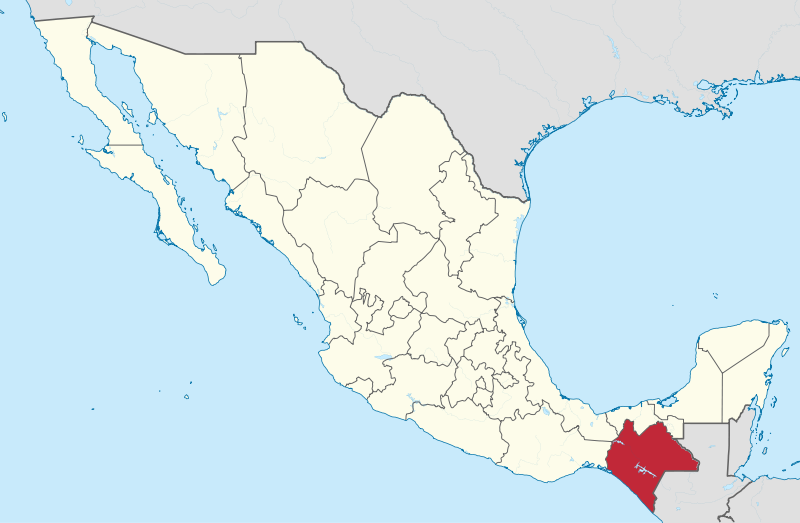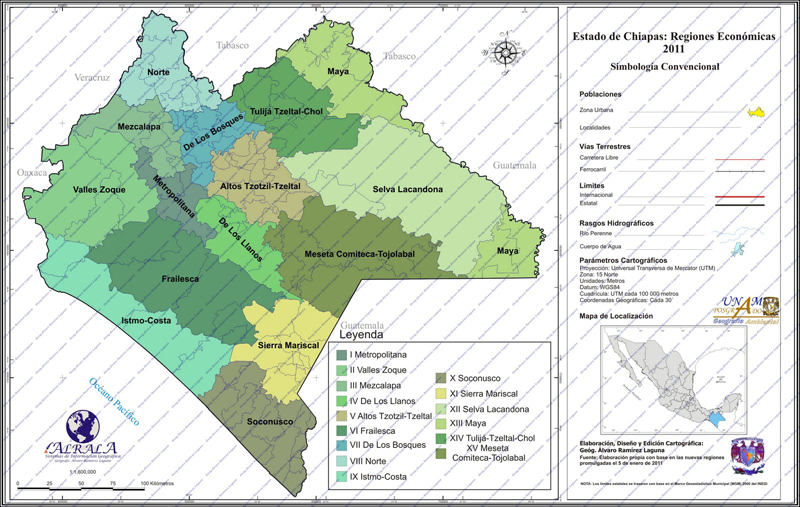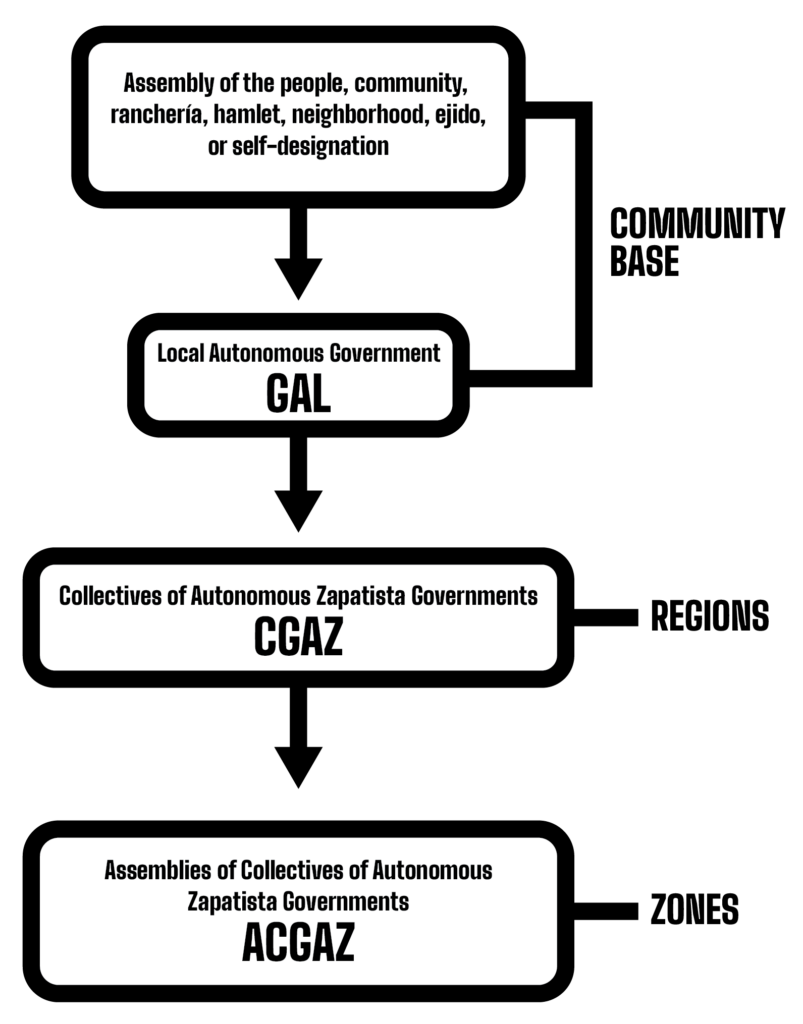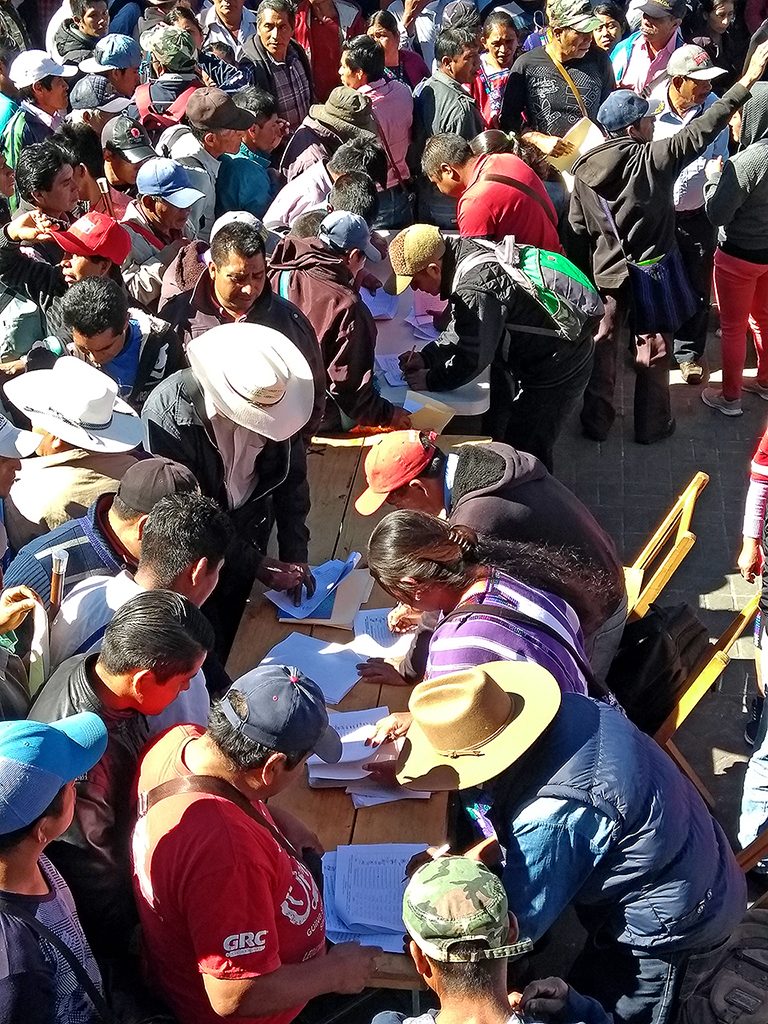We need your support. Your contribution makes it possible for SIPAZ to continue offering international accompaniment in the regions of Chiapas, Oaxaca and Guerrero.
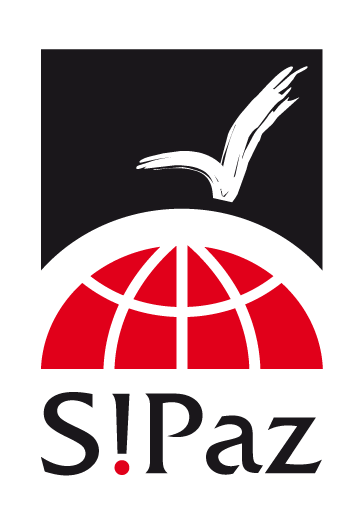
Facts about Chiapas
Location :
Chiapas belonged to the General Captaincy of Guatemala until its annexation to Mexico in 1821. He became the 19th state of Mexico on 14 September 1824 after a plebiscite.
Chiapas is the southernmost state of Mexico, adjacent to the states of Oaxaca and Veracruz to the west and Tabasco to the north and northeast. To the southeast and east lies the border with Guatemala. Chiapas has an area of 73.311 square kilometers, which represents 3.7% of Mexico’s total area (ranking 10th nationally).
Source: National Statistics and Geography Institute (INEGI) 2010
of Mexico’s total area
Nationally
Regions and Municipalities :
Since January 2011, the state has been divided into 15 Economic Regions:
Metropolitan, Zoque Valleys, Mezcalapa, The Plains, The Tsotsil-Tseltal Highlands, Frailesca, The Forersts, Nortth, Isthmus-Coast, Soconusco, Mariscal Sierra, Lacandon Jungle, Maya, Tulijá Tseltal Chol, Comiteca Tojolabal Plateau.
On several occasions since the 90s, and mainly to solve various social, political and religious problems existing in the areas to which they belong, new municipalities have been created. Currently, Chiapas has 125 municipalities.
The state capital is Tuxtla Gutiérrez.
Zapatista Autonomous Structures :
On November 12, 2023, the Zapatista Army of National Liberation (EZLN) presented the new Zapatista autonomous structure through a communiqué published on its social networks, in which it announced the disappearance of the Zapatista Rebel Autonomous Municipalities (MAREZ) and the Good Government Councils (JBG) that had been operating since 2003.
It explained that the previous system was “separating the authorities from the people,” so it decided to implement a new one. Another aspect to explain the change has to do with the need to “increase the defense and security of the communities and of Mother Earth in case of aggression, attacks, epidemics, invasion by companies that are predatory of nature, partial or total military occupations, natural disasters and nuclear wars.”
In the communiqué „About the Pyramids and their uses and customs. Conclusions from the critical analysis of MAREZ and JBG“, Captain Marcos explains that “in summary, it was seen that the structure of government conceived as a pyramid, is not the way. It is not built from below, but from above. (…) So what we did was cut the pyramid. We cut it off from the top. Or rather, we turned it upside down.“
A first level includes the Local Autonomous Governments (GAL) that function in each community or village with presence of Zapatista support bases. In general, the GAL assume the task, among others, of controlling their autonomous organizational resources (such as schools and clinics) and of maintaining relations with neighboring non-Zapatista villages. The coordination of the GAL is made up of autonomous agents and commissioners.
In addition to the GAL, there are the Collectives of Zapatista Autonomous Governments (CGAZ), which make agreements on matters of interest to the convening GAL, organizing assemblies in which the authorities of each community participate. In these assemblies, plans can be discussed and agreed upon on topics such as Health, Education, Agroecology, Justice and Trade. At the CGAZ level, there are the coordinators of each area. The important thing is that the CGAZ are not authorities, but rather they carry out the work defined by the GAL. “Each region or CGAZ has its own authorities, who are the ones who call for assemblies if there is an urgent problem or one that affects several communities,” explains the statement.

